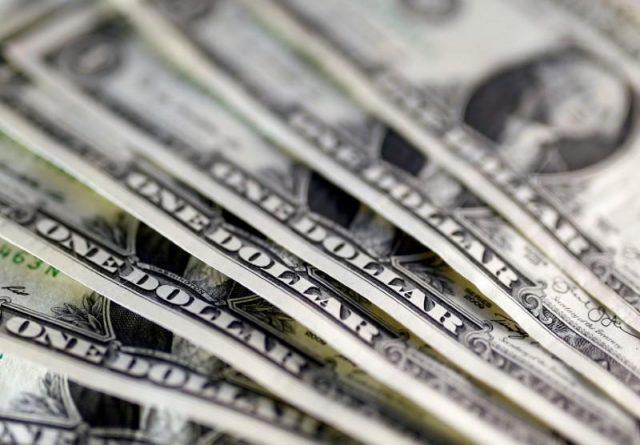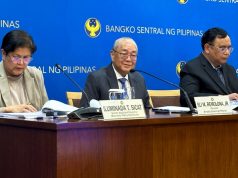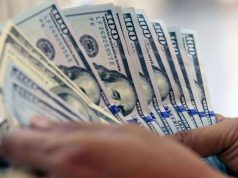MANILA – The country’s international reserves slipped in September on the back of lower gold valuations and as the government paid off more foreign loans, the Bangko Sentral ng Pilipinas (BSP) reported on Friday.
Gross international reserves (GIR) totalled $81.347 billion last month, down from the upwardly revised $81.725 billion in August and 5.5% lower than the $86.139 billion level logged in September 2016.
“The month-on-month decline in the GIR level was due mainly to outflows arising from the revaluation adjustments on the BSP’s gold holdings resulting from the decrease in the price of gold in the international market, payments made by the national government for its maturing foreign exchange obligations, and foreign exchange operations of the BSP,” the central bank said in a statement.
However, these declines were partially offset by higher foreign currency deposits made by the government, alongside a steady stream of income from the BSP’s offshore investments.
The BSP’s foreign investments generated $65.686 billion in September, dropping 11% from the $73.85 billion it made during the same period last year.
The central bank sometimes uses its reserve funds as it buys or sells more units during the daily foreign exchange trading in order to temper any sharp swings of the peso-dollar rate.
The peso hovered at the P51 level last month, averaging at P51.0094 versus the greenback. Central bank officials said they have been actively managing volatilities in currency trading.
The value of the BSP’s gold holdings also declined by 2.9% to $8.065 billion last month, due to lower gold prices in the international market.
On the other hand, dollars and foreign currency held by the central bank ballooned to $5.946 billion in September, more than double the $2.342-billion stash recorded a year ago. BSP officials have said the BSP is long in dollars, with a weaker peso spelling trading gains for the monetary authority.
Reserves parked under the International Monetary Fund (IMF) slipped by a tad to $448.1 million, coming from the $449.2 million logged in August and $458.5 million in September last year.
Special drawing rights, or the amount which the Philippines can tap under the IMF’s reserve currency basket, steadied at $1.201 billion during the month.
The IMF accepts the US dollar, the Japanese yen, the euro, the British pound, and the Chinese yuan as benchmark currencies in computing a country’s reserve position.
Despite the decline, the current GIR level remains above the central bank’s $80.5-billion forecast for the entire year, and the $80.692 billion reserves tallied in 2016.
The GIR is enough to settle 8.5 months’ worth of import payments, which is well above the three-month international standard but lower than the 9.7-month cover posted a year ago. The reserves are likewise enough to cover 5.5 times of the Philippines’ short-term external debt when computed using original terms, and 3.6 times based on residual maturity.
International reserves are composed of gold, the BSP’s assets held in foreign currencies, country quotas with the IMF, and foreign currency deposits held by government and state agencies.
It is a key measure of a country’s macroeconomic footing, as it stands as the country’s buffer versus external financial shocks. International debt watchers have cited the Philippines’ ample reserves as a credit strength.










